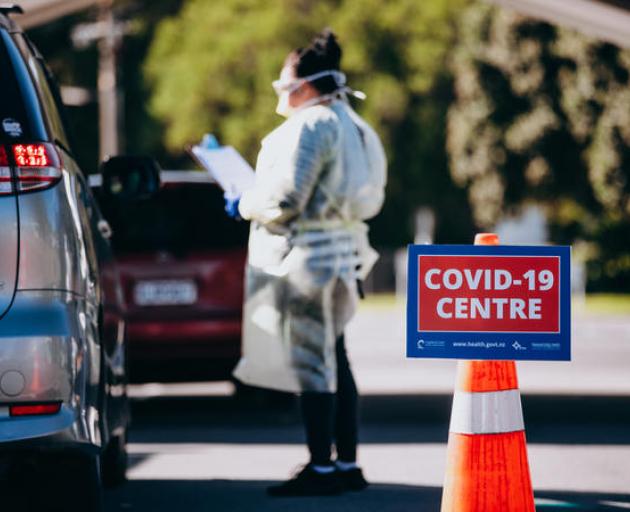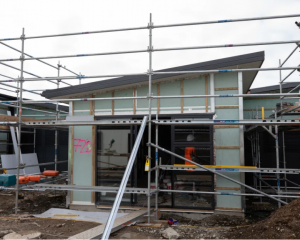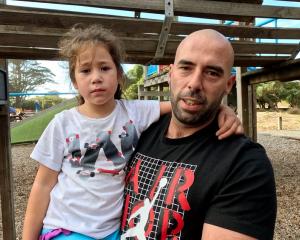
The latest data from the Ministry of Health shows Māori are being tested at a slightly higher rate than non-Māori on average.
But one third of district health boards still appear to be undertesting Māori.
The DHBs with Māori testing rates per 1000 below 20 include Canterbury, South Canterbury, Nelson Marlborough, Whanganui, Mid-Central and Bay of Plenty.
Between April 18 and 30, the Māori testing rate per 1000 people jumped from 16 to 24.
Academic Rawiri Taonui has been tracking the numbers closely.
"There is definitely a marked increase - the Māori average is above the national average, just slightly and that is good to see," he said.
"The key to it has been getting Māori health providers involved in the testing."
On April 24, the Ministry of Health told DHBs to ensure their testing was covering off Māori.
And in some places, iwi health providers quickly started bolstering their efforts to test Māori.
In Taranaki and Te Tairāwhiti, mobile clinics have ramped up in isolated places and even those without symptoms are being tested.
But Dr Taonui said not all DHBs are meeting the mark.
"Next week, we are moving, probably going to make a decision about moving to level 2 and about a third of the DHBs are still behind in their testing for Māori.
"They have got some work to do."
Nelson Marlborough DHB has the lowest testing rate for Māori at 15 per 1000 and it has one of the highest rates of Māori testing positive for Covid-19.
But chief medical officer Dr Nick Baker is defending its response.
"I don't think those numbers do show underperformance, they really reflect the proportion of Māori in our community that have symptoms that allow us to test them," he said.
Baker said the DHB has been actively seeking out vulnerable communities, and running flu jabs and Covid-19 testing at marae.
But he said the district had not been hit with any coughs or colds for weeks, which meant fewer people presenting with symptoms.
"This reflects the healthiness of our community, and I think our swabbing rate also reflects the health of our community, not a failure to seek people out."
Mid- Central DHB also has low Māori testing at 15 per 1000.
Both DHBs said for the most part when the data was taken, the Ministry of Health told them to only test symptomatic people.
Mid-Central acting chief medical officer and chief executive Dr Jeff Brown said things are starting to change.
"We are, even in the last week, making more efforts as we move from chasing symptomatic cases and their contacts through to asymptomatic," he said.
"So we are now planning this week, next week and the following to do more targeted testing of high exposure, high risk groups."
Brown said the district's Māori testing rate was only slightly lower than its Pākehā rate which was 17 per 1000.
Ministry of Health deputy director-general Māori health John Whaanga said he was overall pleased with the rise in Māori test rates.
Māori now made up 16.3 percent of nationwide tests, slightly higher than the Māori population rate of New Zealand.
And while some DHBs were doing better than others, he said they have all had the same time to ramp up testing for Māori.
"The message we gave out to all DHBs was when we made the change in the case definition - that was the change that allowed us to change how we tested and certainly asymptomatic testing," he said.
"I think there were certainly some DHBs that mobilised testing quicker than others."
The DHBs with Māori testing rates above the national average include Waitematā, Auckland, Counties, Waikato, Te Tairāwhiti, Hutt Valley and Wairarapa.
Praise for Māori-led response
Rawiri Taonui said he is glad that targeted testing is underway to make sure the virus is not spreading undetected, and he is heaping praise on Māori.
"The Māori Covid response has been magnificent - food parcels, care packages, looking after old people and getting the testing done," he said.
"Checkpoints are proving themselves effective. Where there are checkpoints there are much lower rates of infection, and that has happened despite the Ministry of Health."
Despite lower Māori testing numbers, Dr Jeff Brown said the response from the local Māori health network was great.
"We couldn't forget the power of the networks and the social media networks that iwi are using," he said.
"Right across from swabbing to medical support through to the psychosocial support - the rapidity with which iwi leaders stepped up and stepped up together has been absolutely impressive."
John Whaanga is echoing the sentiment and said the response has been commendable.
"I want to take my hat off to the Māori health provider network and organisations and community based organisations, they mobilised quickly.
"They have done a fantastic job in terms of having to make that difference, and I'd like to think that the ministry in partnership with DHB stood alongside them to provide them with some funding or resources to enable them to do that."
To date, 127 Māori people have contracted Covid-19 in New Zealand, making up 9 percent of all cases.













